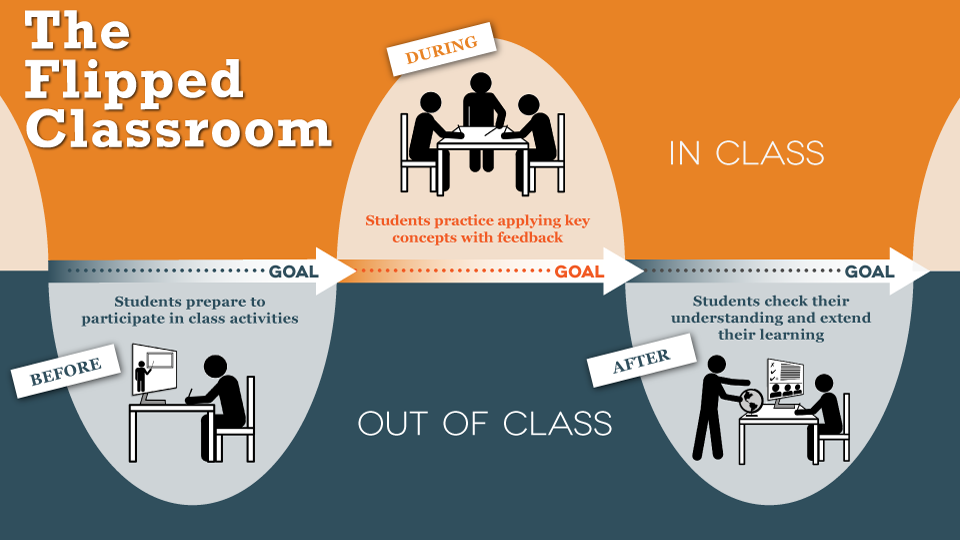Imagine being able to spend your instructional time in class doing engaging, real-world, student-centered activities that help students apply their knowledge and skills at a high level. This is where flipped learning comes in.

Flipped learning is a teaching strategy in which students view and digest the traditional lessons you presented in class (lectures, videos, etc.) as homework, and then apply that new knowledge during the next in-person class session through engaging, authentic learning activities.
The flipped learning model frees the instructor to work with learners more directly, providing guidance, correcting misconceptions, and challenging people to extend their thinking. For students, the flipped classroom is an opportunity to be more active in the learning process, work more closely with peers and instructors on collaborative projects, and apply the information they’re learning, instead of rote memorization of disconnected facts.
Find out more about flipped learning in this video, “Get Started with Flipped Learning.”
Active learning strategies for the classroom and application activities for in-person or online courses are critical to the success of a flipped classroom. In addition, technology such as lesson recordings, screencasts, and other interactive media and assessments can help enable a flipped learning model and help you empower students with high-quality classroom experiences. Interested in learning more? Talk to the DELD team to see how we can partner with you to build flipped content and coach you through the process.
Additional Resources
- Flipping the Classroom, a resource from Vanderbilt University’s Center for Teaching
- The Flipped Classroom, an ebook available through the OSU Library
